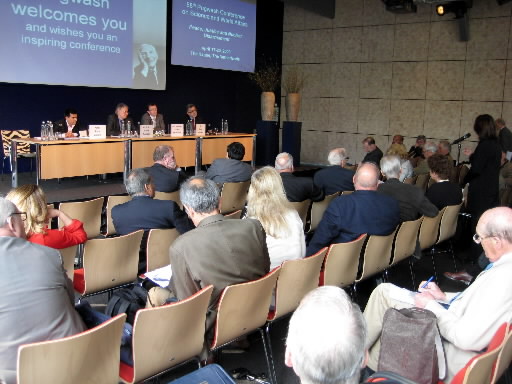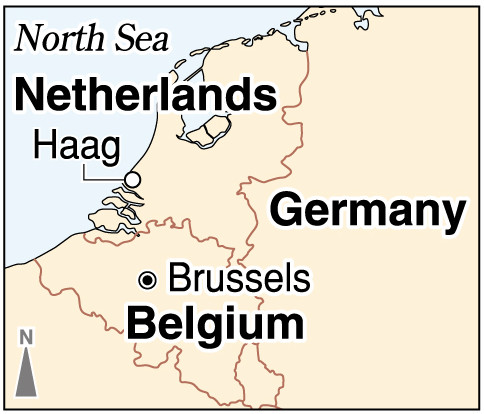Nuclear weapons can be eliminated: Chapter 4, Part 5
Jul. 15, 2009
Chapter 4: NATO's Cold War relics
Part 5: Critical juncture
by Yumi Kanazaki, Staff Writer
Debate on removal gains momentum
Questions are being raised about the collective defense system of the North Atlantic Treaty Organization (NATO), focusing on the concept of “nuclear sharing” under which the U.S. deploys nuclear weapons in non-nuclear nations in the NATO area and gives them the right to use nuclear weapons in the event of war.
Carpeted with colorful tulips, the Netherlands was the site of the annual Pugwash Conference, which was held in The Hague in mid-April and brought together scientists from around the world to work toward the abolition of nuclear weapons.
On the topic of non-nuclear nations and nuclear disarmament, one panelist, Deputy Minister of Defense of Norway, Espen Barth Eide said, “I would like to debate the issue of Europe’s tactical nuclear weapons in NATO.”
His comment was foreshadowed by remarks by U.S. President Barack Obama in his April 5 speech in Prague in which he pledged to work toward a world without nuclear weapons. In response, German Foreign Minister Frank-Walter Steinmeier said in an interview with a weekly magazine that he “would take steps to ensure that the remaining U.S. warheads are removed from Germany.”
It is unusual for cabinet ministers to speak out on the need to take another look at NATO’s nuclear weapon policy.
Disarmament expert Oliver Meier, 45, explained the background behind Mr. Eide’s remark. “If the U.S. and Russia start negotiations on strategic nuclear disarmament this year, all nuclear weapons may become the subject of similar negotiations.” Mr. Meier believes Mr. Eide’s comment anticipated this trend.
Closing in on NATO’s nuclear weapons
The flags of the 27 member nations of the European Union fly on the grounds of the European Parliament in Belgium, where a resolution on nuclear disarmament and non-proliferation was adopted in late April. The resolution cited the Hiroshima-Nagasaki Protocol, whose aim is the abolition of nuclear weapons by 2020, and urged cooperation by the Council of the European Union with the Nuclear Non-proliferation Treaty (NPT) framework.
A Parliament staff member who was involved in preparing the resolution, said, “An awareness of the issue of tactical weapons can be discerned between the lines of the resolution.” The European Union (EU), which has promoted the integration of Europe through agricultural and other policies, is also working to prevent the spread of weapons of mass destruction. At the same time, overall nuclear policy is primarily the responsibility of NATO, which is a military alliance. “Many members of the EU Parliament believe that the nuclear issue should be debated within the EU framework as well,” the staffer said. “In line with the spirit of the NPT, they are critical of tactical nuclear weapons.”
At its April summit NATO resolved to review its Alliance Strategic Concept, which sets out the organization’s long-term policy. After debate by NATO’s Nuclear Planning Group, a final agreement is scheduled to be reached at a summit in the latter half of 2010.
Will the role of tactical nuclear weapons be reaffirmed? Or, in anticipation of next spring’s NPT review conference, will a policy for their total elimination be hammered out in the near future as Mr. Meier and others hope? The time to decide is nearing.
(Originally published on June 19, 2009)
To comment on this article, please click the link below. Comments will be moderated and posted in a timely fashion. Comments may also appear in the Chugoku Shimbun newspaper.









